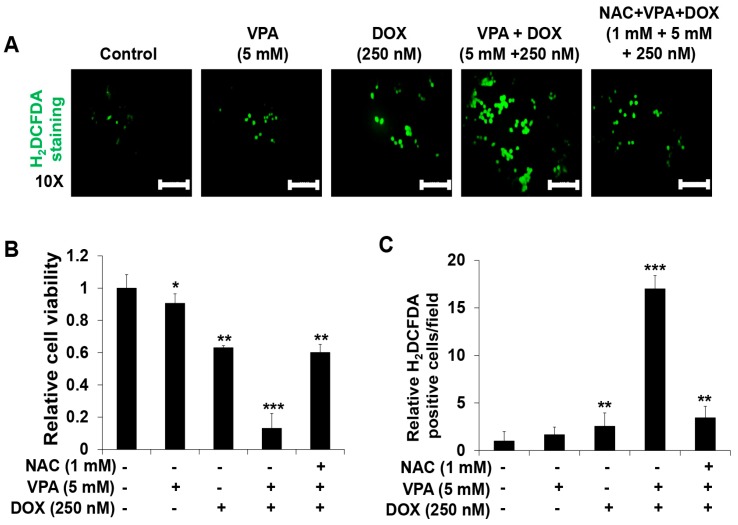Figure 3.
Combination treatment of valproic acid (VPA) and doxorubicin (DOX) synergistically enhanced reactive oxygen species (ROS) generation in HepG2 cells. (A) The 2′,7′-dichlorofluorescein diacetate (H2DCFDA) fluorescence probe was used to determine ROS generation in HepG2 cells at the indicated concentrations of VPA and DOX monotherapies and combination treatment after incubation for 48 h. Images were taken using fluorescence inverted microscopy. Scale bar represents 200 μm; (B) The viability of HepG2 cells was determined after 48-h incubation at the indicated experimental condition by using EZ-Cytox assay; (C) the ROS-generating cells were counted in different fields (containing at least 40 cells per field) and calculated relative to the control group for each experimental condition. Three independent experiments were performed and results shown as the mean ± standard deviation (SD). * p < 0.05, ** p < 0.01, *** p < 0.001 compared with the control group.

